2024 LEGUMINOSE Intercropping Trial: Economic Insights and Yield Data Analysis
Intercropping is the practice of growing two or more species of crop together. Through a field lab, farmers have been investigating the benefits of intercropping, identifying the barriers which prevent take-up, and collaborating with researchers to uncover practical, science-based information.
The results below reveal clear benefits for the practice, including improved nitrogen levels, reduced pest damage, and greater resilience, making intercropping a practical and profitable option for arable farming.
This research is part of the Horizon Europe LEGUMINOSE project.
Trial design
The LEGUMINOSE trials consisted of trial strips for three plots - two control plots, and one intercropped plot. Seed rates, varieties and species were all under farmer control, as were fertiliser and agrochemical inputs. Guidance was to use 60% of normal seed rate for all crops in the intercropped areas. Crop yield and grain samples were collected at harvest, along with soil samples from all plots.
Whilst 12 trial plots were drilled, the wet spring and other issues with seed quality and harvesting led to only five plots being used in crop analysis. Where useful, analysis of remaining trial data and observations have been incorporated into the final conclusions.
Crop yields were compared using Land Equivalent Ratios. The Land Equivalent Ratio (LER) is a critical metric for evaluating the benefits of intercropping because it measures the efficiency of land use when crops are grown together compared to growing them separately. It is calculated as a ratio between the area under sole cropping compared to the area needed for intercropping to achieve the same yield with the same management level. The sum of both of the intercropped yields divided by the sole-crop yields.
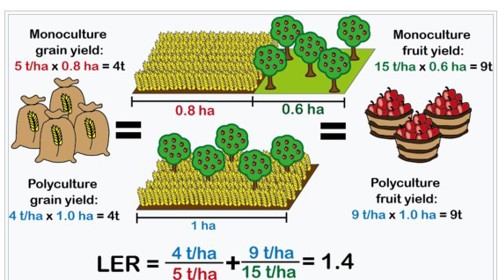
If the LER is greater than 1.0, intercropping is more efficient, meaning it produces more yield per unit of land than growing the crops individually. The example above shows that we would need 1.4 ha of land in monocrops to produce the same yield as 1 ha of intercropping – i.e. the land 40% more efficiently used than sole cropping.
2024 yield results
The results of the completed trials show the following outcomes.
| Crop | Plot yield (t/ha) | Land Equivalent Ratios | |
| Trial 1 | Control wheat | 2.6 | |
| Control beans | 2.4 | ||
| Intercrop wheat/ beans | 3.5 | 1.43 | |
| Trial 2 | Control barley | 5.2 | |
| Control peas | 4.6 | ||
| Intercrop barley/ peas | 5.6 | 1.15 | |
| Trial 3 | Control oats | 2.5 | |
| Control beans | 2.3 | ||
| Intercrop oats/ beans | 3.7 | 1.53 |
Conclusions on intercropping yield data
The LER calculations demonstrate that intercrops had increased resilience, and all crops produced more product per ha than if grown as monocrops.
Trial 1 suffered badly with Yellow Rust in the wheat but although not organic, had no fungicide treatment. However, despite not being treated, it still showed benefits from intercropping. In the Oat/bean trial, the season meant that neither crop did well as a monocrop, but the presence of the companion crop meant that there was one moderate crop to harvest.
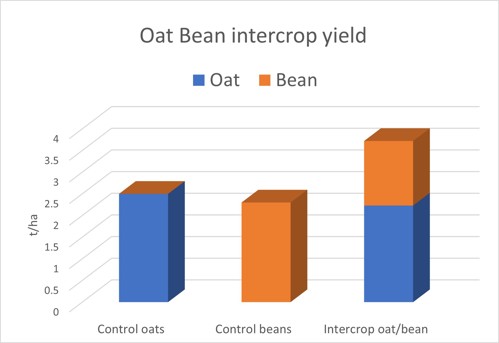
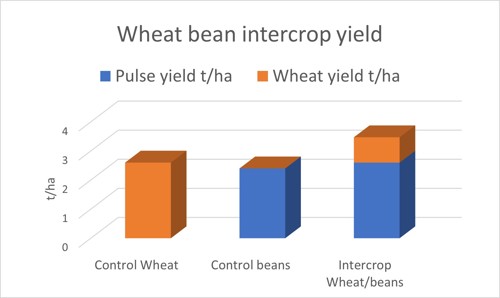
Is intercropping more profitable?
An economic analysis of 2024 intercropping data.
The below data shows how intercropping can be profitable in the right circumstances.
The economics for the trial were assessed by taking ex-farm crop prices available on 2/12/2024 without any premiums, penalties, charge for separation or any specific contract specifications.
| Crop | Plot yield (t/ha) | Sale value /ha | Average increase in crop sales | % increase /ha | |
| Trial 1 | Control wheat | 2.6 | 462.80 | ||
| Control beans | 2.4 | 516 | |||
| Intercrop beans and wheat | 3.5 | 720.22 | 230.82 | 32.04 | |
| Trial 2 | Control barley | 5.2 | 785.20 | ||
| Control peas | 4.6 | 1081 | |||
| Intercrop barley and peas | 5.6 | 1550.8 | 617.69 | 39.83 | |
| Trial 3 | Control oats | 2.5 | 377.50 | ||
| Control beans | 2.3 | 494.50 | |||
| Intercrop oats and beans | 3.7 | 654.51 | 218.50 | 33.38 |
This data demonstrates the economic potential of intercropping, particularly in cases like Trial 1, where the crops were affected by disease. On top of the increase in sales, farmers also made savings on spray and fertiliser costs.
However, when sold into premium markets, crop separation may be necessary, so this adds a cost of £10-20/tonne. There are also extra growing costs when there is additional seed, and possibly an extra drill pass.
The increased returns from intercrops are higher when one of crops is a premium crop such as peas (£235/t) when compared with beans (£215/tonne), with a LER increase of 0.15 but an economic increase of 40%.
Does intercropping increase grain protein?
Following last year's trials where intercropped wheat had higher grain protein than the monocrop wheat, we assessed wheat and barley.
This year, there was no increase in wheat protein, although both samples were accepted for milling. However, the intercropped barley showed a higher protein content compared to the monocrop. This would have lifted the barley to a malting specification, increasing price by £20 (although in 2023 the premium was over £70/tonne). We will continue to investigate this in future trials.
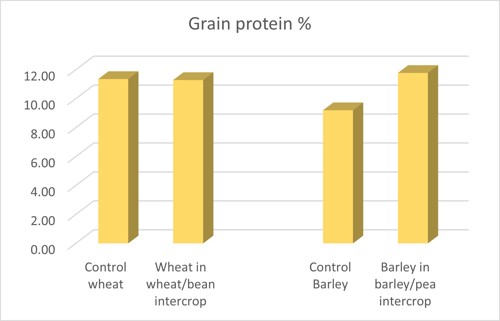
The impact of intercropping on soil nitrogen
One reason for growing pulses is to provide nitrogen (N) for subsequent crops, particularly in organic systems. Soil N residues are an important potential benefit of intercropping, so soil samples from two sites were analysed to compare the soil N levels in all three trial plots. The bean/wheat plot received 60Kg nitrogen fertiliser. A third site showed slight decreases in Soil N on the intercropped plot, however this was associated with a much higher grain protein content.
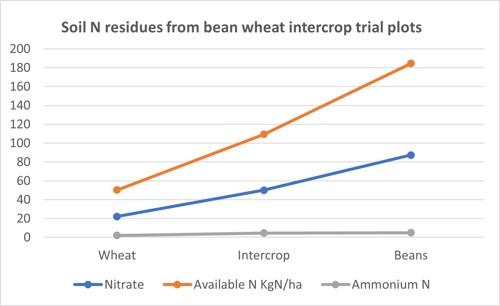
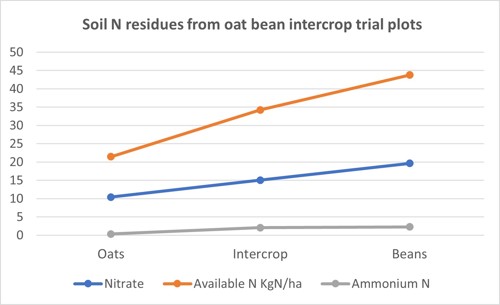
The results indicate that there is some correlation between soil N residues and pulse population despite the additional cereal. Even when grown in an intercrop, pulses will reduce the need for additional N in following crops.
Reduced levels of pest and predation in intercrops
All samples of grain were analysed for pests, along with anecdotal evidence collected from trialists. Two trial sites were lost due to pigeon predation of pea seed or germinating plants soon after drilling, but notably the intercrop plots showed higher levels of pea survival. One of the surviving intercrop plots later suffered from deer grazing, which seemed to be targeting the pea plants.
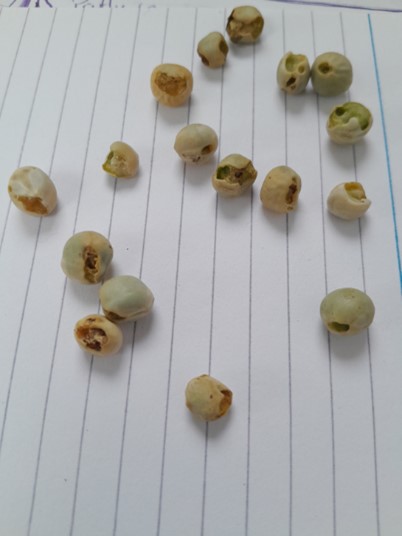
Pea moth larvae damage
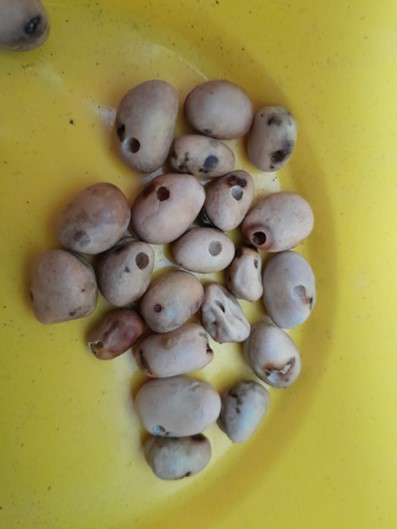
Bruchid beetle damage
Analysis of pea and bean samples showed reduced levels of pea moth larvae damage from 10% in monocrop to 5% in the intercrop plots.
Bruchid beetle damage was similarly reduced from 25% in the monocrop beans to 14% in the intercrop samples.
Overall conclusions
The intercrop trials, by comparing neighbouring plots, provide a more precise assessment than sampling from different fields. This approach allows for a clearer comparison of outcomes, demonstrating positive effects of intercropping, such as increased soil and grain nitrogen levels, reduced pest damage, and greater resilience in both agronomic and economic terms.
While questions remain about optimal seed rates and the impact of pulse proportions on partner cereals, the results highlight intercropping's potential. Although feed markets reduce the need for separation, the potential high premiums from higher specification cereals, or from high value niche crops which are at risk of predation or harder to harvest in pure stands, makes intercropping a realistic option.
This trial is part of the LEGUMINOSE project which is funded by Horizon Europe with UK funding provided by UKRI. For more information see www.leguminose.eu. Views and opinions expressed are however those of the author(s) only and do not necessarily reflect those of the European Union or European Commission. Neither the European Union nor the granting authority can be held responsible for them.
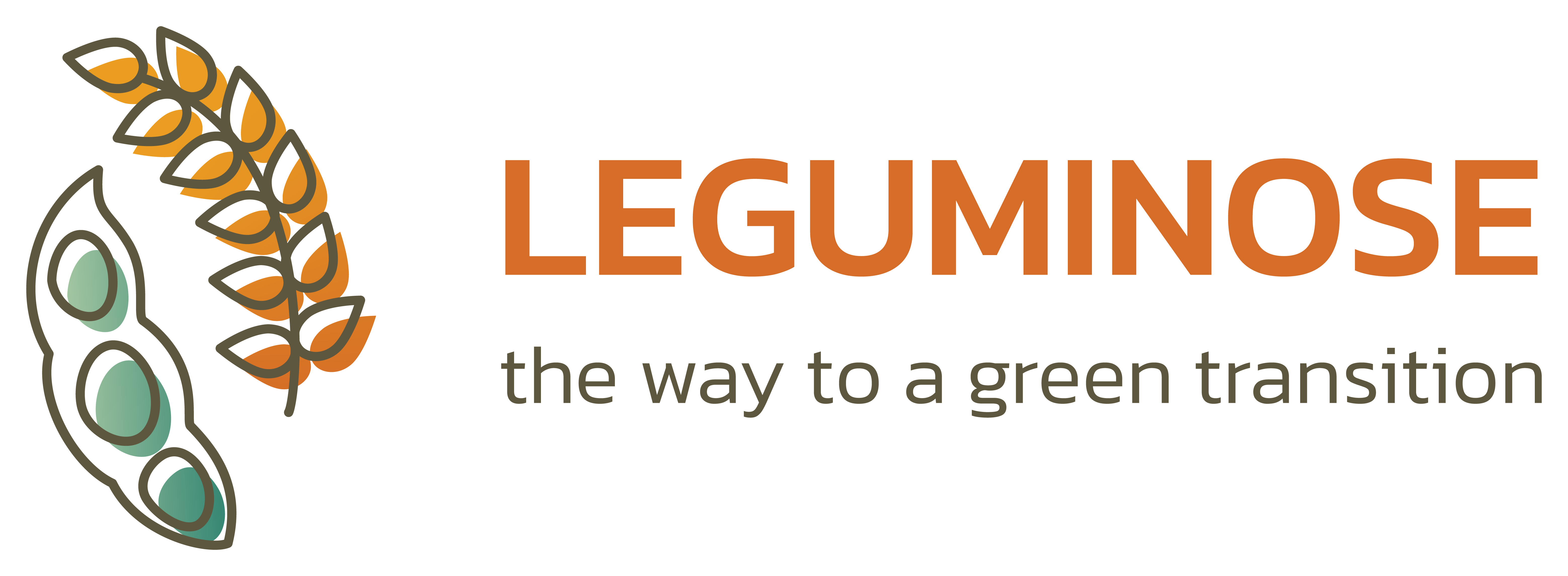


Related news

22 June 2023
Nature friendly weed control
Farmers discuss how to scale up intercropping in UK and beyond

12 April 2023
Nutrient management
Intercropping Trials To Launch As Part Of Pan-European Research

12 February 2024
Nature friendly weed and disease control